Grafton Sandstone Quarries
Introduction
Text-to-speech Audio
Although Amherst is the sandstone capital of the world, it was not the only town in Lorain County to quarry sandstone during the 19th and early 20th centuries. Along the banks of the East Branch of the Black River Grafton established three major sandstone quarries. Due to the success of these quarries, railroads were introduced to transport the sandstone, which in turn promoted the creation of other small business.
Images
Quarry workers operating heavy equipment to lift a sandstone block, exact location unknown but likely either the Grafton Stone Company or the Elyria Stone Company, circa 1890-1900.
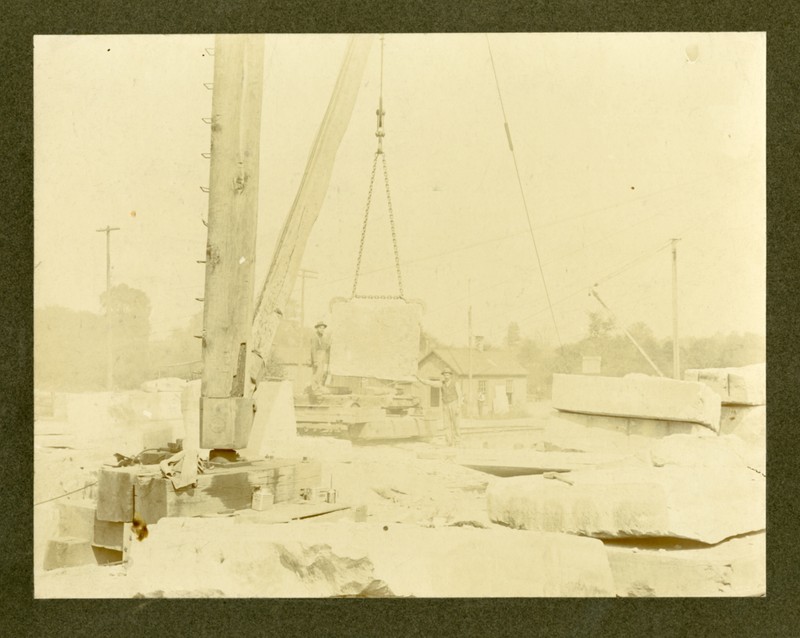
Group photo of Grafton-area quarry workers, exact location unknown, circa 1900.
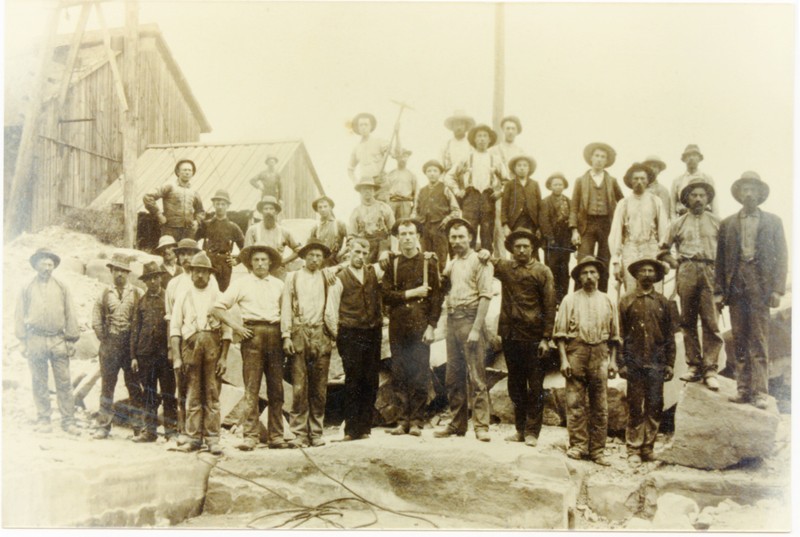
The railroad spur from the Grafton Stone Company quarry (also known as Miller Quarry) at Indian Hollow Reservation, 1906.
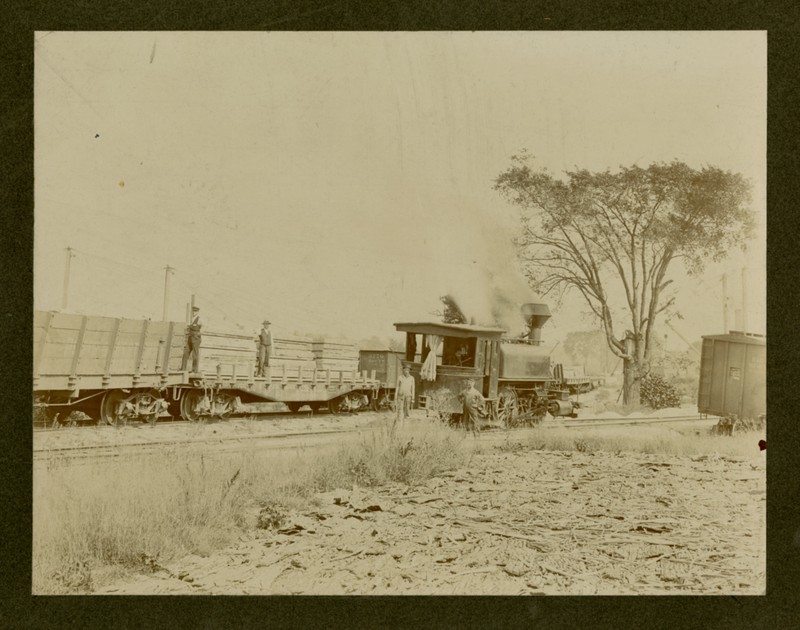
A sandstone grindstone that remains from the Grafton Stone Company at Sheldon Woods. Sandstone remains may be viewed by walking Sheldon Wood's Windfall Quarry trail.
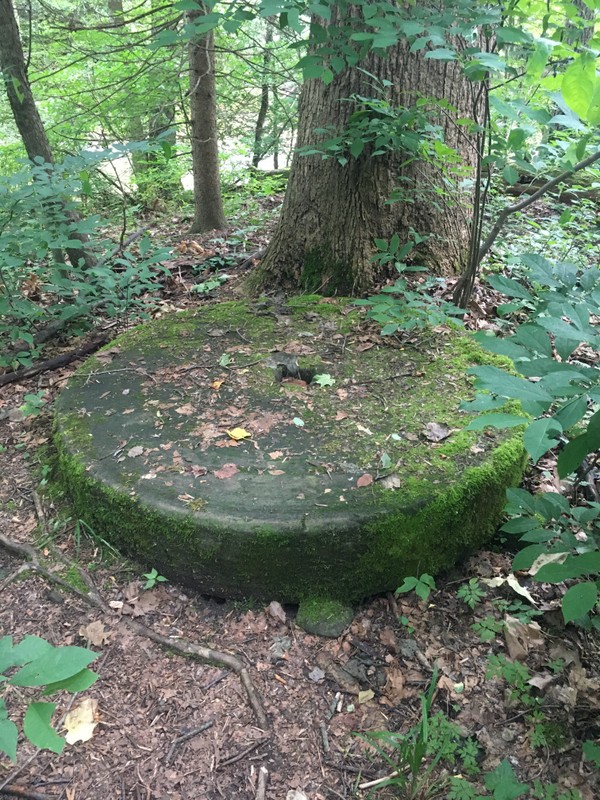
Sandstone grindstones from the Grafton Stone Company that remain in and near the Black River. Sandstone remains may be viewed by walking Sheldon Wood's Windfall Quarry trail.
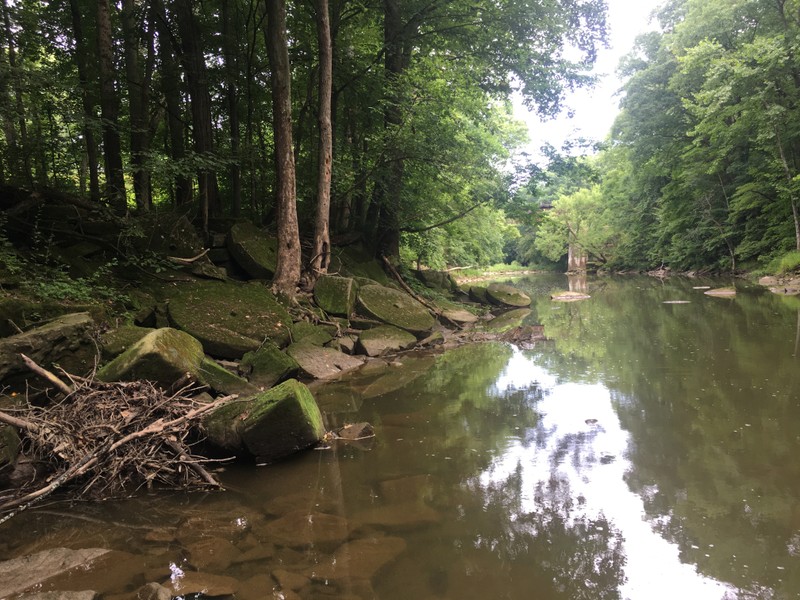
Backstory and Context
Text-to-speech Audio
The first quarry established in Grafton was the Black River Quarry, which John Hart founded in 1849 at 19 years old. When W.E. Miller bought the quarry in 1868, he renamed it the Grafton Stone Company though it was sometimes colloquially called the Miller Quarry. By 1879, the quarry employed 40 men who earned a combined payroll of about $1400 and produced primarily grindstones At its height, the Black River Quarry operated an area that spans almost the entire boundaries of Indian Hollow Reservation.
Another major sandstone quarry in Grafton was the Elyria Stone Company, which operated Mussey Quarry in Elyria and a quarry in what is now Willow Park. This quarry had several nicknames such as Willow Creek Quarry (as it sits along a tributary of the Black River) or Rawson Quarry after the Rawson family, who were one of the first settlers of Grafton and owned the land that the quarry sat on. Although the Rawsons owned the land that the quarry sat on, they did not operate the quarry themselves. Instead they rented the land to Amos Tran who operated the quarry – a practice which was common among Grafton’s quarries.
Apparently regretting his decision to sell his first quarry, John Hart opened another quarry in 1872, the Black River Stone Company. The decision to name this quarry so similarly to his first quarry was to retain his customers under the Black River Quarry. But alas this quarry would also be bought by the Grafton Stone Company, this time in 1881. By 1892 though, the Black River Stone Company’s quarry employed 170 men and also produced primarily grindstones.
The sandstone produced by these quarries and others in Grafton were used to build local building, bridges, and culverts. With the wealth that the quarries generated, Grafton was able to build railroads with which to ship their sandstone products and fulfill regional demands. For example, the Black River Quarry shipped sandstone as far away as Toronto, Canada. Not surprisingly, Grafton attracted French-Canadian as well as Polish, Welsh, Irish, and German immigrants to work the quarries. With an influx of people to the city, the town was able to open other business and the town thrived.
From the late 1860s to the turn of the century, Grafton’s quarries were the number one employer. At their height in 1906, both the Grafton Stone Company and Elyria Stone Company employed 300 people. Starting in 1886, however, Grafton’s quarries found it increasingly difficult to remain independently operated as the Cleveland Stone Company and Ohio Quarries bought and incorporated most of Lorain County’s other quarries. This – paired with concrete becoming a more popular building material in the 1900s and 1910s – forced Grafton’s quarries to close by 1920. In 1919, the Elyria Stone Company’s quarry was filled with water and used as the town’s water supply until 1995. As the quarries closed, workers left Grafton to find work elsewhere.
Most of the land that Grafton’s quarries once occupied is now owned by the Lorain County Metro Parks. At Sheldon Woods, a section of Indian Hollow Reservation Metro Park, the Windfall Quarry Trail takes hikers on 0.93 mile walk where they can walk alongside the Black River and view the sandstone remains of Grafton’s quarries. Please note that this trail is unpaved. Public bathrooms are located at the entrance of the connector trail.
Sources
Lorain County Metro Parks. “Indian Hollow Reservation.” Accessed June 29, 2022.
https://www.loraincountymetroparks.com/indian-hollow-reservation-info
Smith, Chris and Paul Justy. The Lost Quarry Industry of Indian Hollow and Willow Park –
Grafton, Ohio. Grafton, Ohio: Grafton Village Town Hall, 2010.
The Village of Grafton. “Community Heritage and Photos.” Accessed June 29, 2022.
https://villageofgrafton.org/community-heritage/
Image 1 courtesy of the Grafton-Midview Public Library, Grafton, OH
Image 2 courtesy of Grafton-Midview Public Library, Grafton, OH
Image 3 courtesy of the Grafton-Midview Public Library, Grafton, OH
